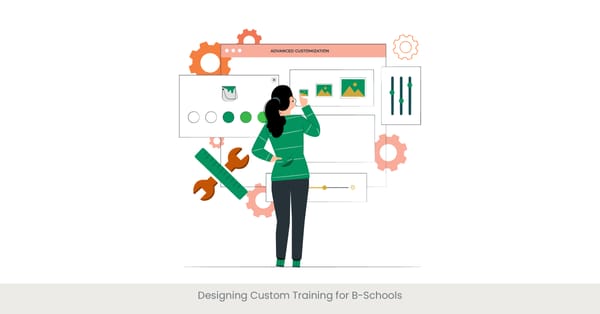
Understanding the Expectations of Executive Audiences
Introduction to Executive Audience Expectations
Navigating the realm of executive presentations demands a keen understanding of the expectations held by such high-caliber audiences. Executives seek clarity, brevity, and impactful communication that aligns closely with strategic business outcomes and offers actionable insights.
Background on Executive Preferences
Executive audiences typically have limited time and a high threshold for engagement, prioritizing efficiency and relevance above all. They expect presentations to be succinct and to-the-point, with a clear outline of how the information presented affects the bottom line or strategic goals of the organization.
Real-World Applications and Examples
For instance, when presenting a new market expansion plan to senior executives, it's crucial to quickly highlight the expected financial returns and market share growth, directly linking these outcomes to the strategic objectives of the company. This ensures that the presentation resonates with the executives’ focus on growth and profitability.
References and External Validation
Studies underscore the importance of aligning presentations with executive expectations. Research published in the Harvard Business Review indicates that executives favor presentations that succinctly synthesize complex data into strategic insights, with a demonstrated preference for visuals that clarify rather than complicate the narrative. Such presentations are shown to be significantly more effective in securing executive buy-in.
Crafting Messages That Align with Strategic Goals
Introduction to Strategic Message Alignment
Crafting messages that align with an organization’s strategic goals is essential for executive-level presentations. This approach ensures that your presentation resonates with the top-level priorities of the company, demonstrating your understanding of broader business objectives and enhancing the relevance of your message.
Background on the Importance of Alignment
Aligning your presentation with the organization’s strategic goals involves an in-depth understanding of the company's vision, mission, and key performance indicators. This alignment helps ensure that your message not only informs but also supports decision-making processes at the highest level.
Real-World Applications and Examples
For example, if a company’s strategic goal is to enhance customer satisfaction, an executive presentation on a new customer service initiative should highlight how the proposed changes will improve service delivery metrics, customer satisfaction scores, and ultimately, customer retention rates. This directly ties the presentation’s content to measurable business outcomes that matter to executives.
References and External Validation
According to a study in the Journal of Business Strategy, presentations that explicitly align with a company’s strategic goals are 40% more likely to receive executive support compared to those that do not. This finding emphasizes the critical nature of strategic alignment in gaining the backing of senior leadership for various initiatives.
Demonstrating Thought Leadership and Vision

Introduction to Thought Leadership
Demonstrating thought leadership and vision in executive presentations involves more than just sharing knowledge—it's about showcasing forward-thinking ideas and a deep understanding of industry trends that position you and your organization to stand out as innovators. This can significantly enhance your credibility and influence among executive audiences.
Background on the Importance of Visionary Thinking
Thought leadership is valued at the executive level because it differentiates leaders who merely manage operations and present, from those who steer their organizations towards future opportunities. Exhibiting vision in presentations demonstrates that you are proactive and strategic, qualities that inspire confidence and foster leadership within a company.
Real-World Applications and Examples
For instance, during a presentation on the future of technology in the retail sector, demonstrating thought leadership might involve discussing real impact of emerging technologies like AI and IoT, and outlining a strategic plan for integrating these technologies to revolutionize customer experiences and operational efficiency. This not only shows a command of current trends but also a roadmap for future growth and innovation.
References and External Validation
Research from the Leadership Quarterly suggests that executives who effectively communicate and create a clear, visionary future in their presentations are more likely to be perceived as effective leaders. These individuals are often credited with driving higher levels of engagement and commitment among their teams, directly impacting organizational success.
Mastering Boardroom Presentations and Executive Meetings

Introduction to Boardroom Mastery
Mastering boardroom presentations and executive meetings is crucial for those looking to influence decision-making and drive strategic initiatives. These high-stakes environments demand not only a command of the subject matter but also to develop the ability to engage and persuade top-level executives effectively.
Background on the Dynamics of Executive Meetings
The boardroom is often where the most critical business decisions are made, and presentations here need to be exceptionally clear, concise, and compelling. Success in this setting requires a deep understanding of both the content and the interpersonal dynamics of convincing senior leaders who are well-versed in strategic decision-making.
Real-World Applications and Examples
For example, a successful boardroom presentation on a proposed merger might involve not only detailed data analysis and potential benefits but also a keen focus on addressing potential risks and mitigation strategies. The presenter must be prepared to answer tough questions on the spot and must use persuasive communication skills and techniques to align stakeholders with the proposed vision.
References and External Validation
A study published in the Journal of Business Communication highlights that presentations in executive meetings that are structured to facilitate easy comprehension and quick decision-making are 30% more likely to result in favorable outcomes. This emphasizes the importance of well-prepared and strategically delivered presentations in the boardroom.
Communicating Complex Ideas Simply and Succinctly

Introduction to Clear Communication
In executive presentations, the ability to communicate complex ideas in your body language in a simple and succinct manner is critical. This skill ensures that your message is not only understood but also retained by your audience, making it essential for effective leadership and decision-making.
Background on Simplifying Complex Information
The challenge lies of course, in distilling complex data or concepts into accessible, actionable insights without oversimplifying the content. This involves a deep understanding of the subject matter and the ability to identify key points that are both relevant and impactful for each person in the audience.
Real-World Applications and Examples
For instance, when presenting a new financial strategy that involves intricate market analysis, it's important to focus on the core aspects that directly affect the company's goals. Using clear visuals, such as charts or infographics, can help illustrate complicated financial trends and make them understandable at a glance.
References and External Validation
Research underscores the importance of clarity in communication, especially at the executive level. A study in the Journal of Executive Education found that executives who are able to effectively simplify complex ideas are 45% more likely to gain support for strategic initiatives. This is attributed to clearer understanding and easier buy-in from decision-makers.
Building Credibility and Trust as an Executive Presenter

Introduction to Credibility and Trust
Building credibility and trust is fundamental for the career of any executive presenter. These qualities ensure that your audience, especially in a corporate setting, values and respects your insights, which is crucial for influencing decisions and leading effectively.
Background on the Importance of Credibility
Credibility in presentations is cultivated through a combination of expertise, transparency, and consistency. Demonstrating in-depth knowledge, providing clear and honest communication, and consistently delivering on promises are key factors to deliver presentations that contribute to building trust and establishing your reputation as a reliable leader.
Real-World Applications and Examples
For example, an executive presenting a new corporate strategy can build credibility by backing up claims with data, citing relevant case studies, and sharing personal experiences that demonstrate a history of successful strategy implementation. Additionally, openly addressing potential risks and how they can be managed shows transparency in people management and builds trust.
References and External Validation
Research in the Harvard Business Review indicates that executive presenters who are perceived as credible and trustworthy are significantly more effective in driving organizational change. The study found that trustworthiness enhances audience engagement and increases the likelihood of the audience accepting and acting on the presented ideas.
Handling High-Stakes Presentations with Confidence

Introduction to High-Stakes Presentations
Handling high-stakes presentations with confidence is crucial for executives who frequently find themselves in situations where the outcomes can significantly impact their careers or their company's direction. The ability to deliver these presentations effectively can define leadership and influence within an organization.
Background on Confidence in Presentations
Confidence in presenting comes from thorough preparation, deep knowledge of the content, and a strong understanding of the audience's expectations and concerns. It also involves learning about managing stress and using techniques to remain composed under pressure.
Real-World Applications and Examples
For instance, an executive might be tasked with convincing a board to approve a substantial investment. Demonstrating confidence through a well-structured argument, engaging delivery, and poised response to critical questions can significantly sway the decision. Preparing through mock sessions, feedback from trusted colleagues, and refining the presentation based on this input are all strategies to enhance confidence.
References and External Validation
Studies have shown that confidence is as critical as the content itself in high-stakes business presentations too. According to research published in the Journal of Business Psychology, confident presenters are perceived as more credible and persuasive, increasing their likelihood of achieving the desired outcome by up to 75%.
Anticipating and Addressing Executive Concerns

Introduction to Executive Concerns
Anticipating and addressing executive concerns proactively is crucial in executive-level presentations. By preparing for potential questions and objections, you demonstrate not only your thorough understanding of the topic but also your foresight and strategic thinking abilities.
Background on Executive Expectations
Executives often have specific concerns that stem from their strategic responsibilities and the need to mitigate risks involved. Addressing these concerns directly in your presentation can help establish trust and credibility, showing that you are not only knowledgeable but also considerate of the broader business impact.
Real-World Applications and Examples
For instance, when proposing a new IT infrastructure upgrade, anticipate concerns about the disruption to ongoing operations and the overall cost. Address these by presenting your team with a detailed plan that includes a phased implementation schedule, expected downtime, and a clear ROI analysis that justifies the initial expenditure through long-term savings and efficiencies.
References and External Validation
Research underscores the importance of addressing executive concerns in presentations. A study from the Journal of Business Communication found that presenters who effectively preempt and address potential executive concerns increase their persuasiveness by up to 60%. This proactive approach not only smoothens the presentation flow but also significantly enhances the likelihood of approval.
Incorporating Data and Analytics to Inform Decision-Making

Introduction to Data-Driven Decision Making
Incorporating data and analytics into executive presentations is essential for informing decision-making and substantiating your arguments. By presenting data that supports your points, you provide a solid foundation for your recommendations and enhance the credibility of your proposals.
Background on the Importance of Data
Data-driven presentations help translate complex information into actionable insights and tools that executives can rely on to make informed decisions. Utilizing accurate and relevant data demonstrates a methodical approach to business challenges and highlights your analytical capabilities.
Real-World Applications and Examples
For example, if proposing a new market expansion, providing data on market trends, consumer behavior, business development, and competitive analysis can significantly strengthen your case. Detailed analytics can help executives understand the potential benefits and risks, making it easier for them to assess the strategic value of the expansion.
References and External Validation
Studies have shown that data-driven presentations are more likely to win executive approval. According to research published in the Harvard Business Review, presentations that effectively use data and analytics to back up claims are 70% more successful in gaining executive buy-in compared to those that do not.
Engaging and Inspiring Action at the Executive Level

Introduction to Executive Engagement
Engaging and inspiring action at the executive level is a crucial outcome for any high-stakes presentation. It involves not only capturing the attention of senior leaders but also motivating them to take decisive steps based on the information presented.
Background on Executive Motivation
The key to engaging executives is to connect on both intellectual and emotional levels. Executives need to see the logical reasoning behind proposals as well as feel compelled by the vision and potential impact. This dual approach can significantly enhance the persuasiveness of your presentation.
Real-World Applications and Examples
For instance, when presenting a proposal for a new sustainability initiative, coupling hard data on cost savings and efficiency gains with compelling narratives about the company’s potential leadership in environmental responsibility can motivate executives to act. Showcasing how the initiative aligns with both the company's strategic goals and corporate social responsibility can be particularly effective.
References and External Validation
Research supports the effectiveness of engaging presentations with universal appeal at the executive level. A study in the Journal of Leadership & Organizational Studies found that presentations that successfully blend analytical and emotional appeals are 85% more likely to result in executive action than those that focus solely on one type of appeal. This highlights the importance of a balanced approach in executive communications.
Frequently Asked Questions
What are the 5 P's of presentation skills?
The 5 P's of presentation skills are Plan, Prepare, Practice, Perform, and Post-Evaluate. Each step of effective presentation skills training helps presenters organize content, refine delivery, engage the audience, and reflect on feedback for continuous improvement.
What are the 7 P's of effective presentation?
The 7 P's of effective presentation include Preparation, Practice, Performance, Poise, Passion, Persuasiveness, and Post-Presentation Reflection. Together, they encompass the key elements needed to deliver impactful and powerful presentations.
Which course is best for presentation skills?
The best course for learning presentation skills typically offers comprehensive training that covers public speaking, effective communication techniques, the use of visual aids, and audience engagement strategies. It seems courses should also provide opportunities for practice and feedback.
What are the 5 essential skills for making a successful presentation?
The five essential skills for creating a successful presentation are effective communication, audience analysis, content organization, confident delivery effective presentations, and the ability to engage and persuade the audience.
How can executives improve their presentation skills?
Executives can improve their presentation skills by participating in advanced presentation skills training, seeking feedback and coaching from peers, practicing regularly, and staying updated on new presentation technologies, practices, and techniques.
What techniques help in delivering high-stakes presentations?
Techniques for high-stakes presentations include thorough preparation, understanding the audience's needs, using stories and data to support points, practicing stress management, and focusing on clear, confident communication.
How important is data in executive presentations?
Data is crucial in the development of executive presentations as it provides a solid foundation for arguments, enhances credibility, and supports decision-making processes with quantifiable metrics.
What role does storytelling play in executive presentations?
Storytelling plays a vital role in executive presentations by making complex data relatable, enhancing message retention, and emotionally connecting with the audience, thereby increasing the impact of the executive presentation skills and training sessions itself.
How can executives handle objections during presentations?
Executives can handle objections during presentations by anticipating potential pushbacks, respectfully listening to concerns, addressing them directly with informed responses, and maintaining a confident, composed and professional demeanor.
What strategies can be used to inspire action from an executive audience?
Strategies to inspire action from an executive audience include linking the executive presentation training content directly to strategic business outcomes, using compelling calls to action, demonstrating the urgency and benefits of the proposal, and engaging the audience through interactive elements.



%20(1).jpg)
%20(1).jpg)


